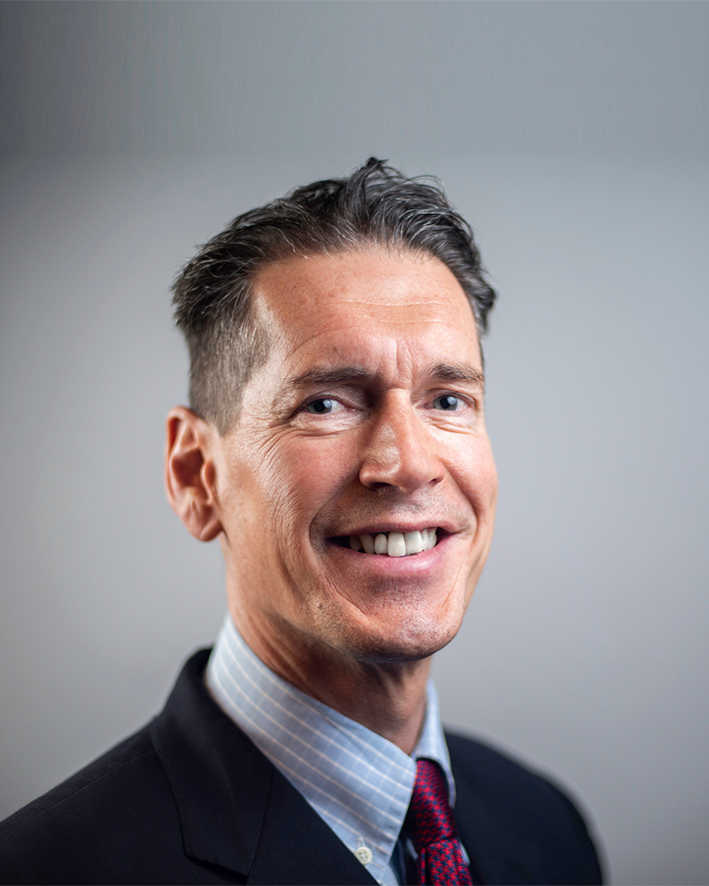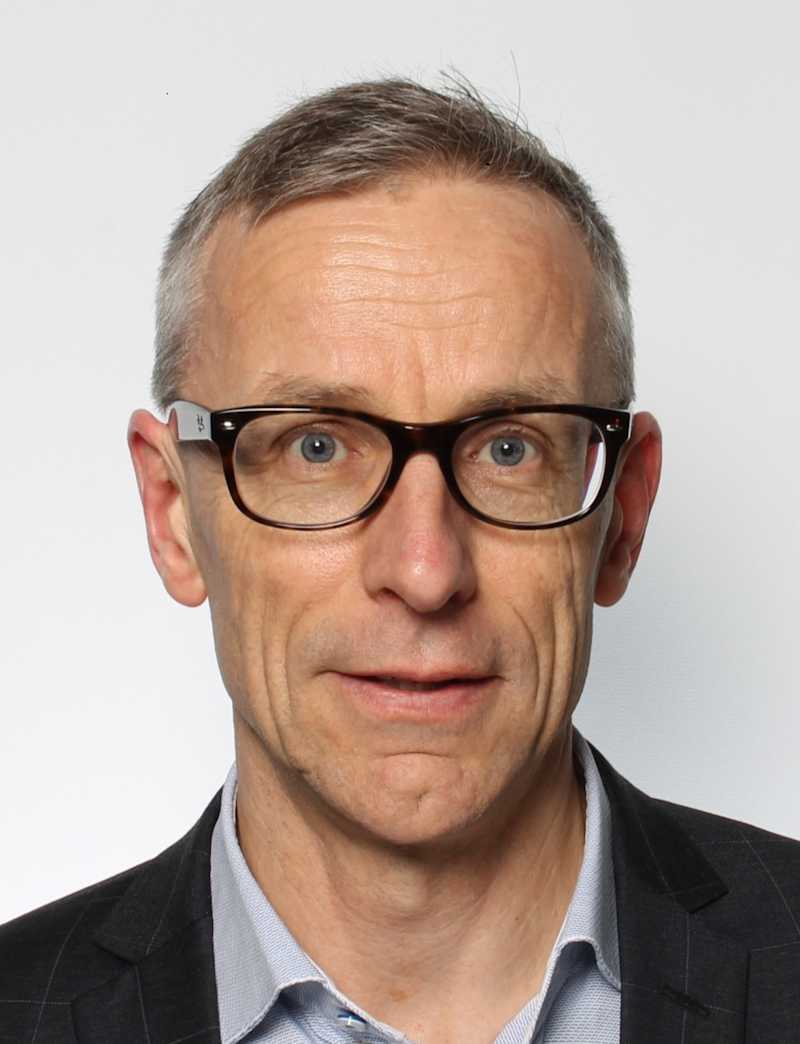Meet Sisvel’s new general counsel
Steve Jedlinski talks about his career in IP, explaining patents to juries and how his litigation experience helps him keep disputes out of the courtroom
In March, Sisvel welcomed the newest member of its senior leadership team when Steve Jedlinski was appointed the firm’s general counsel. Steve joined us after over 15 years in private practice, including his most recent tenure as an equity partner with Holland & Knight’s Chicago based IP group.
During his decade-plus at H&K, Steve built a distinguished reputation as a trial lawyer in complex IP and technology matters and was also a sought-after transactions and strategy adviser.
Sitting down with Sisvel Insights after just two months in his new role, Steve explained how his balanced experience representing parties on opposing sides of IP matters helps him cut through the complexities of technology disputes and identify strategic commercial solutions that serve the best interests of his stakeholders. He also shared some of his priorities for refining both Sisvel’s internal legal processes and licensing services as he settles into the new in-house role.
Why did you decide to go in-house after so long in private practice?
What drew me to Sisvel was the opportunity to be part of an organisation where the day-to-day business revolves around IP. This is a sophisticated and principled entity that helps innovators realise the value of the inventions they have created. The company operates in a diverse range of cutting-edge technologies, and I think there are significant growth opportunities in developing areas. That is very exciting.
Additionally, I was very keen to make a tangible impact working in a unified team that’s driving together towards a shared vision – something that is not always readily apparent within a law firm. Finally, I’ve known and worked with several Sisvel team members in the United States in previous roles, so this is an opportunity to collaborate closer with professionals I respect.
For me, these first couple of months have confirmed that Sisvel has an exceptionally strong legal department with high-functioning professionals.
Tell us about your background and how you got into the IP space.
Having recovered from three knee surgeries, I pursued a biomedical engineering degree at Northwestern University while playing on the varsity soccer team. After college, my plan was to proceed to medical school and ultimately become an orthopedic surgeon. However, conversations with practising medical professionals, including an alumnus who was the orthopedist for several professional sports teams, made me reconsider that path.
Hearing somebody so accomplished express reservations about the state of the profession gave me pause, so I started exploring other options. By this time, I had also spent time in research labs and knew I wanted something more fast-paced. Fortunately, a family friend who was a lawyer introduced me to a patent attorney at his firm and it piqued my interest.
After my undergraduate studies, I spent a year at a plaintiff-side class action litigation firm, where I gained invaluable exposure to high-stakes, complex litigation and developed the assurance I needed to proceed to law school. While there, I was involved in Price v Philip Morris. This centred on unique false advertising claims against light cigarettes and resulted in one of the largest jury verdicts in the history of Illinois.
Such exposure to sophisticated, high-stakes litigation, combined with my technical background from studying BME and my competitiveness honed through collegiate athletics, made me realise that “I could do this.”
What did you focus on during your career in private practice?
After graduating from law school, I joined a small boutique IP firm where I gained a lot of experience in patent prosecution, providing strategic counselling along with a little bit of litigation. This hands-on experience, coupled with the mentorship of professionals deeply versed in strategic patent portfolio development, equipped me with a robust patent foundation that I continue to leverage today.
I then transitioned to Holland & Knight, where my practice at first focused primarily on patent litigation and then evolved to encompass general complex technology disputes.
During my time in private practice, I made it a priority to cultivate deep relationships with my clients and establish myself as their trusted strategic adviser. I immersed myself in understanding the intricacies of my clients’ businesses, challenges and goals, effectively positioning myself as their outside general counsel by being their go-to resource for the full scope of issues they encountered. This approach proved successful and I ultimately progressed through the ranks all the way to equity partner.
What were your favourite aspects of litigating and was the soccer field good preparation for the courtroom?
Regardless of the subject matter, whether it was dental chairs, cellphones or oncology drugs, I loved the opportunity to dive deep into the details of each case. I took great pride in meticulously researching the factual backgrounds and then skillfully cross-examining witnesses to uncover the underlying truths behind their positions. I was proud that some people referred to me as the “Detective.”
There were certainly aspects of competing in soccer that have served me well in litigation. I learned the importance of finding time and space to calm my mind and body and get my heart rate down before major events, because that’s how I am able to perform at my best. Additionally, both soccer matches and legal disputes require teamwork – you’re only as good as your weakest link. You have to find ways to motivate your colleagues to collectively obtain the best results.
Does your experience as a litigator mean you know how to keep disputes out of the courtroom?
Absolutely. A significant portion of my practice was on the defence side of patent issues, so there was a lot of responding to cease and desist letters and licensing demands from patent owners and, of course, navigating litigation matters. I was always focused on trying to find strategic business resolutions that would allow my clients to continue to operate while providing fair compensation to the IP rights holder.
A large amount of this work occurs in the absence of any filed litigation; it might encompass rebuttal communications, private arbitration, mediation or any other alternative dispute methods that lead to a resolution. However, I also gained valuable experience representing patent owners, whether it be in licensing, acquisition or litigation matters.
I’ve seen what drives the decision-making on both sides and I think that has tremendous value in terms of finding creative ways to resolve disputes without resorting to litigation.
You’ve spent a lot of time explaining complex issues to juries. How did you approach this?
The biggest mistake I have seen attorneys make is going way too deep without giving the proper introduction. You really need to step back and think about what themes or stories are going to resonate with the trier of fact so that you can focus on just the essential information. At trial, you have to condense a fair amount of information into a very short period of time, so there is a constant process of going back over your material and removing, removing, removing.
In terms of what messages will be effective, I’ve learned to go on instinct. There are always surprises when you meet with a jury after the fact and try to figure out what resonated. But the inventive story is often crucial. If you have a solo inventor working in their garage, or a researcher sitting at a lab bench for 30 years, that’s a powerful narrative that can resonate.
These principles have helped me provide day-to-day legal counsel to my clients as well as communicating the value of IP to the public. It’s so important to focus on the overall story or narrative and to convey both the high points and the risks in a concise, direct and efficient way.
How much of your role at Sisvel will be focused on litigation and other outward-facing tasks versus more internal initiatives?
As general counsel, my responsibilities are split approximately evenly between internal and external issues with slight fluctuations depending on what’s going on in the business. While patent issues are certainly a significant component, my role as general counsel encompasses a broad range of legal disciplines, from tax to employment to real estate, and overseeing external counsel in these areas.
At Sisvel, we approach licensing from a global perspective. That comes from our over-arching goal to provide access to technologies in a way that allows implementers to effectively conduct business all over the world. To create licensing solutions that work for today’s globally operating product companies, we must maintain an international outlook.
Litigation is always a last resort and in the context of Sisvel and the SEP space, it should be an unnecessary step if everyone is engaging in good-faith negotiation processes.
A key focus for me is active involvement in the internal management of legal issues, implementing processes and procedures to mitigate risk and ensure consistency throughout the organisation. Coming from a large law firm and being process-driven by nature, I aim to introduce additional efficient workflows and best practices. While these may be internal processes, they create operational efficiencies that ultimately benefit our external partners and stakeholders by enabling Sisvel to provide streamlined and effective licensing services.
Quickfire …
What’s a typical weekend activity for you?
Following where the winds of our kids' interests take us, with some stops at local coffee shops for an americano or two.
What should someone with a free day in Chicago make sure they see, do and eat?
With amazing architecture, museums, parks, food and sports teams, Chicago offers so many iconic experiences to fill a free day – preferably during the summer. But the must dos are a walk along the river, taking in a game at Wrigley Field, dinner in Fulton market and capping the night at a blues club.
Where is your favourite holiday destination?
My happy place is a mountain retreat that strikes the perfect balance between tranquillity on trails and convenient access to local activities.
What’s the most memorable live performance you’ve witnessed?
Etched in my memory bank is walking up to Chicago’s iconic Soldier Field to witness the clash of two world giants, Germany and Spain, during the 1994 World Cup.
What’s your favourite TV series?
I am hard pressed to ever turn off a re-run of Seinfeld.
What’s the best piece of professional advice you’ve received?
There are no shortcuts to any place worth going.


